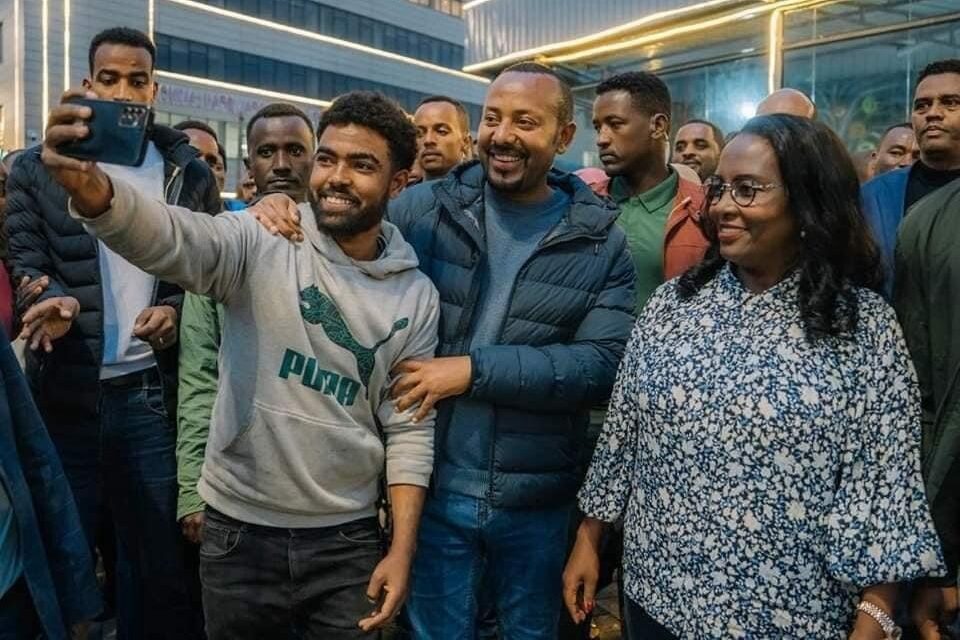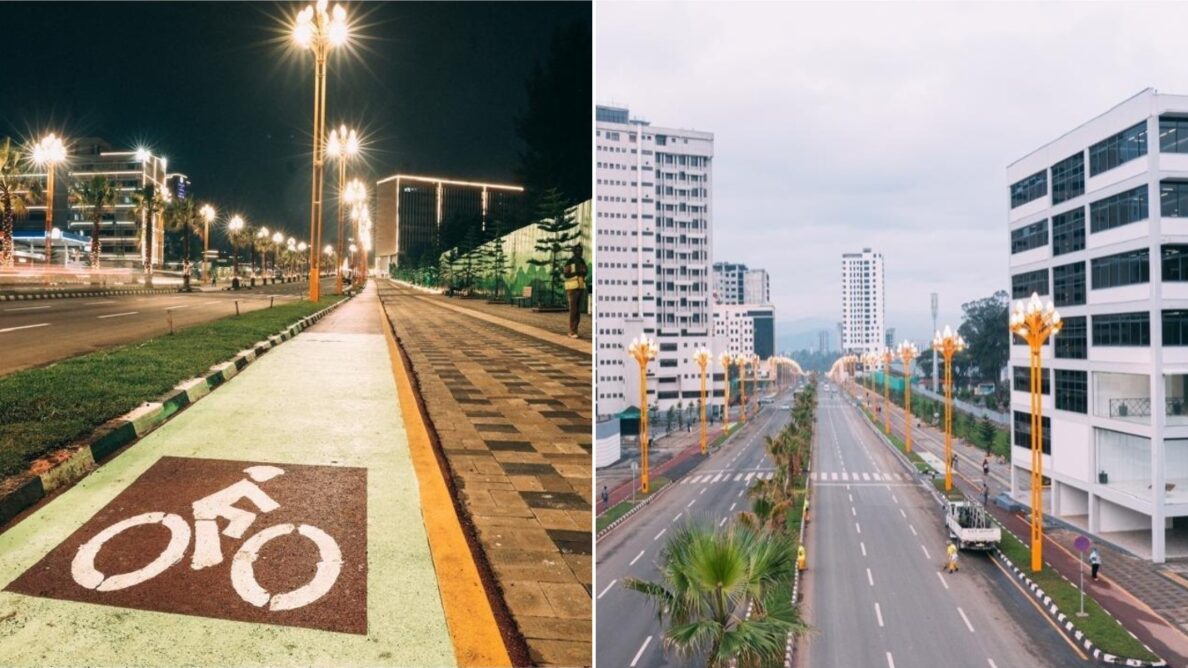By Miessa Elema Robe, PhD
Introduction
This very title I am writing on reminds me what Kofi Annan, former Secretary General of the United Nations, once said about the corridor development initiative which reads “Corridor initiatives are more than just roads or railways; they are lifelines that connect communities and catalyze economic activity.“
Addis Abeba, being headquarter for the African Union and the 3rd diplomatic hub next to Geneva and New York, is working hard to fit its name, “the new flower”
As Addis Abeba has been experiencing rapid urbanization and population growth in recent years, the city administration has identified the corridor development as a strategy to accommodate this growth while promoting sustainable urban development. These corridors are intended to serve as economic, social, and transportation hubs, connecting different parts of the city and facilitating the movement of people, goods, and services.
Being led by the visionary interventions of Prime Minister Abiy Ahmed (PhD) and Adanech Abiebie (Honorary Dr.), the Mayor of Addis Abeba City Administration, the corridor development initiative has come up with multiple socioeconomic blessings to Addis.
The Addis Abeba city administration, even before launching this comprehensive corridor development project, has undertaken enormous measures to ensure Addis’ livability and habitability both to its residents and tourists from local and international communities; as works have been done successfully on the implementation of Green Legacy initiative, housing accesses, expansions of infrastructure facilities and many more.
Presenting yearly report in front of the city council weeks ago, H.E Mayor Adanech Abiebie, underlined that the administration has successfully accomplished more than 18 thousand socioeconomic projects, including massive road expansions, health and education facilities, constructing huge centers for commodity exchanges, building Rehabilitation and Skills development center for vulnerable women.
Most importantly, the mayor noted that in order to successfully manage the inflation, the construction of several government-funded factories producing breads and ‘Enjera’ have been successfully done and have practically been playing positive roles in the market.
In this particular piece entitled “Beyond Visible Infrastructures: Untold Success Stories of the Addis Abeba Corridor Development”, I have mainly focused on the untold stories deep-rooted in this great development initiative.
Changing the working culture
The Corridor Development of the City of Addis Abeba, among several other successful achievements, has brought tremendous changes regarding transforming the working culture of the city’s leadership in particular and the community in general.
From the very preparation of its design to the completion, the city administration relied on the Ethiopian professionals and labor forces, including the contractors, consultancy organizations and labor force deployment.

The leadership, including the mayor and the whole leadership from up to down, have been working ‘twenty-four hours a day every week’, starting from the planning to the execution of this great initiative, withstanding all hardships that come their way. The city administration, as we observe in the health institutions “professional duty” is implementing the “leadership duty” as a reform, so that the whole leadership apparatus works twenty-four hours each day, to meet the public interests.
The contractors and consulting organizations have also been playing pivotal roles in executing those massive projects, qualitatively and timely. This particular scenario, more than anything else, has brought a concrete confidence that Ethiopia would be transformed both socially and economically, by the genuine collaboration of its citizens.
The labor forces, including our precious mothers, young ladies and youths, have been working day and night, paying all the required sacrifices both in rainy, cold and sunny times. There is no such thing that could make us proud than seeing our citizens working hard for the betterment of their own lives, providing for their families and contributing to their country’s socio-economic prosperity at large.
This exemplary intervention witnessed that, we are not only rebuilding our city, we also have significantly displayed to the world that “the realization of Ethiopia’s Prosperity is at the door when Ethiopians cooperate their minds, hearts and hands”
In addition to the practical successes, we have witnessed in this initiative, this scenario has posed a transformational positive impact in transforming the working culture of our leadership and community in the long run.
Reconciling disputing infrastructures
Among other crucial utilities, electricity, telecommunications and water services are the souls of cities. However, those crucial infrastructures rarely reconcile, especially in the case of most African cities where we can easily navigate Addis Abeba’s prevailing scenarios in this case.
The Corridor development of the city of Addis Abeba, first and foremost, took these disputed conditions into consideration and reconciled these fundamental infrastructures. These promising transformative changes being in place following the corridor development, in the long run, I would confidently argue, would build a solid foundation to the realization of the SMART CITY we are dreaming for.

The fiber tubes of the telecom services, the pipelines of the water services and the electric poles have been reconciled, as they have been designed at the same center for the delivery of integrated services to the city residents. In doing so, the Addis Abeba city administration has not only saved the budget bankruptcy, but also its human resources deployment and its time.
Not only those socio-economic infrastructures, the vehicle roads, public walkways, under-paths and bike lanes have been reconciled. As the result, the citizens have got the privileges of walking safely and freely on their walkway roads, the vehicle drivers have become beneficiaries of the well-equipped road accesses, furthermore, those who enjoy biking are provided with suitable bike lanes, which could bestow them with several health benefits, too.
This reconciliation of infrastructures, alongside several other socioeconomic developments, has come with the confidence that even the old cities that lacked proper planning could be transformed if the public and private sectors heartily cooperate.
Community participation, modernization and employment
Cities are extremely dynamic. In order to fit with these political, economic and social dynamisms, the city administrations should apply the humanist approach where the interests of residents are prioritized. The humanistic approach to urban development emphasizes the importance of placing people at the center of the planning and design process. It focuses on creating cities and urban spaces that are livable, inclusive, and sustainable, taking into consideration the needs, aspirations, and well-being of the residents.
In the case of Addis Abeba city, modernization of the livelihoods of residents are in place following the corridor development. As the residents who have left their previous homes due to the city relocation have been suited with the standardized homes and livable residences as a replacement, this practical commitment has laid solid foundations for the modernization of livelihoods of residents. Including the newly established Lemi Kura sub-city, the corridor development implemented across downtown areas of the Arada, Kirkos, Lideta, Yeka and Bole Sub-cities has also been realizing urban development, fostering social cohesion, enhancing quality of life, and furthermore promoting equitable access to resources and opportunities.
As the process of decision making has been widely granted the public participation, it has significantly contributed for the preservation of heritages, the promotion of public spaces, and the provision of affordable transportation systems.
Cities, besides delivering well-equipped infrastructures to their residences, are the center of employment. According to Mayor Adanech’s report to the city council weeks ago, this corridor development alone has created tens of thousands of employment opportunities for women, youths and other professionals.
Heralding renaissance for Ethiopian cities
The corridor development applied in Addis Abeba, from its very deep-rooted aspirations, carries tremendous messages for both the Ethiopian and African cities.
Nowadays, both the national and regional leaderships are entertaining this vision, some even begun implementing it in their cities, based on their local socioeconomic conditions.
As example, last week, 22nd of July, 2024, the entire leadership of the Gonder city administration of the Amhara region led by Mayor Bayuh Abuhah, visited the whole process and success of the Addis Abeba city corridor development as they have already started implementing it. And, it has become common listening from friends and families that the corridor development has become an issue in major cities in Ethiopia, including Adama, Shashamanne and many more. This apparently resembles that, the initiative once began in Addis Abeba only a couple of months ago, has climbed several hills of successes and has become the changing phenomena for the renaissance of cities in the country.
It is not an exaggeration to argue that the corridor development initiative has become the unstoppable light of transformation for generations to come! AS
Editor’s Note: Miessa Elema Robe holds PhD in Political Science and International Relations. He is currently serving as head of the Press Secretariat at the Addis Abeba City Administration. He can be reached at miessaelemarobe@gmail.com









